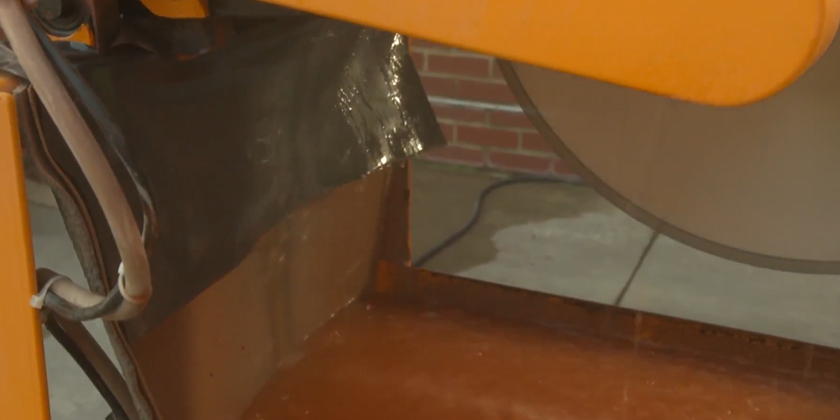Stationary Masonry Saws & Respirable Crystalline Silica
OSHA requires employers to limit workers exposure to respirable crystalline silica on the job. Hence, the video below and the chart on this page show the standards and requirements necessary for tasks performed using stationary masonry saws. Using these standards helps you with safety while using stationary masonry saws and exposure control.
When used properly these methods effectively limit workers’ exposure to potentially harmful silica dust. The video below shows the method for reducing exposure while using a stationary masonry saw for cutting. However, the same principles apply to any power tools that generate silica dust. In fact, many tools used for cutting and grinding various stone products require safety methods for reducing dust. This is especially true of high dust producing equipment. In the case of stationary masonry equipment, it is necessary to have an exhaust method if the saw is used indoors. Additionally, you may find that water treatment plants for masonry work are helpful as well.
Operating Stationary Masonry Saws Safely
In order to comply with the table below, dust collection systems or other techniques and equipment is used in the immediate work environment to effectively remove dust from an enclosed work space.
Stationary saws effectively control respirable crystalline silica when an integrated water supply mechanism is used properly. Another technique that is effective for use in enclosed areas is the removal of generated dust using an exhaust mechanism. Using a dust collector in the work area can increase the effectiveness of controlling silica dust.
While operating stone cutting equipment, it is important to monitor the equipment for proper condition. Additionally, it is important to maintain the water delivery system and the condition of the saw and blade.
An operator’s checklist can help with maintaining and servicing masonry saws and blades.
Operators Checklist
Operators regularly check the water delivery system and the machine’s condition to ensure proper functionality. They also perform regular maintenance to stationary saws to keep them in good working order. Regular water delivery system checks include:
- Checking nozzles for damage.
- Removing clogs.
- Ensuring proper connections are intact.
- Dispose of dirty water and waste material properly.
Maintenance tasks often recommended by saw manufacturers often include the following:
- Replacing basin water as needed.
- Using the proper type and size of blade.
- Following the recommended maintenance schedule.
- Operating the saw with the correct amount of water.
- Regularly inspecting the the blade and saw for wear and damage.
The following table shows the requirements for controlling respirable crystalline silica.
| Specified Exposure Control Methods When Working With Materials Containing Crystalline Silica | |||
|---|---|---|---|
| Equipment / Task | Engineering and Work Practice Control Methods | Required Respiratory Protection and Minimum Assigned Protection Factor (APF) | |
| ≥ 4 hours/shift | > 4 hours/shift | ||
| (i) Stationary masonry saws | Use saw equipped with integrated water delivery system that continuously feeds water to the blade.
Operate and maintain tool in accordance with manufacturer’s instructions to minimize dust emissions. |
||
| – When used outdoors | None | None | |

